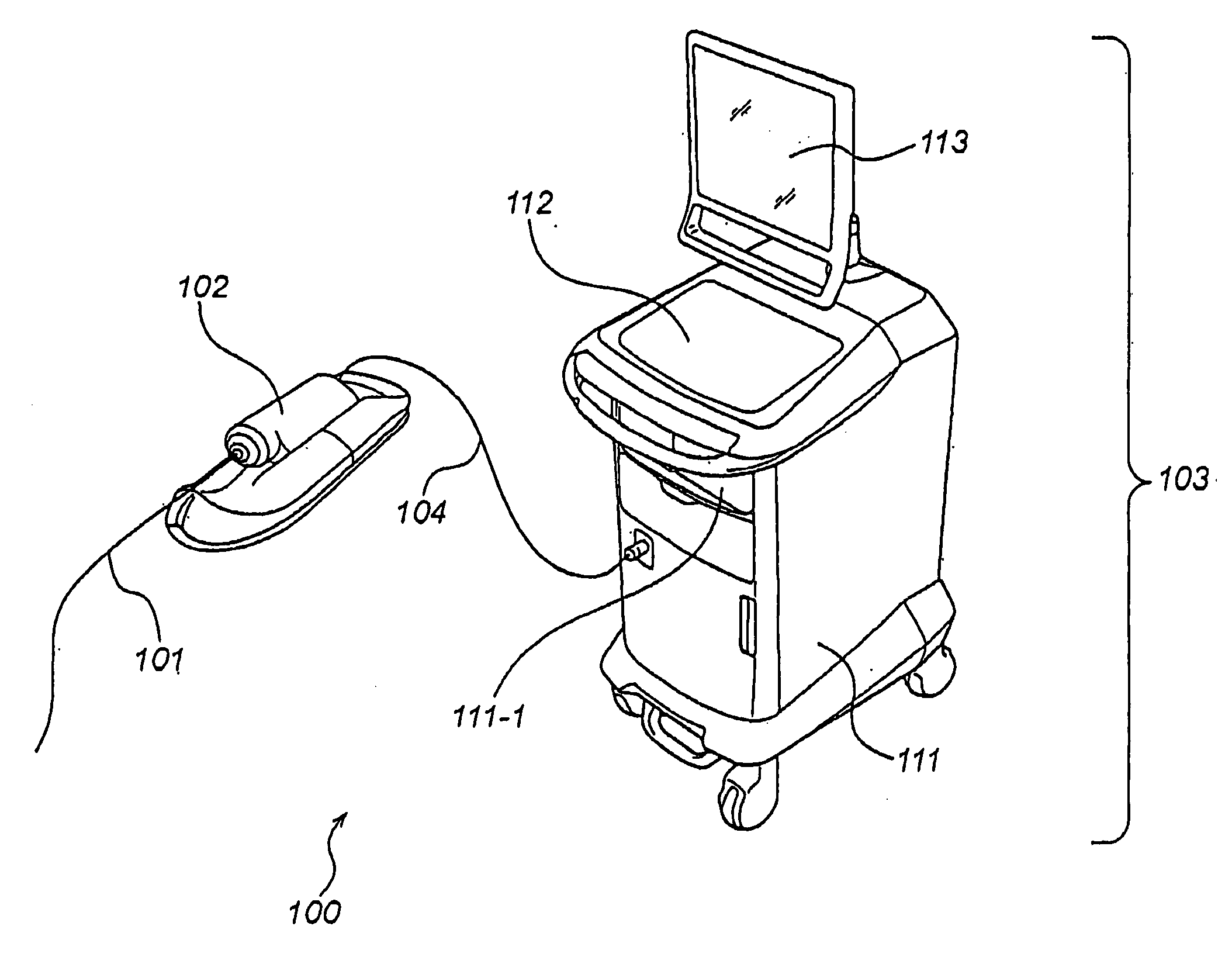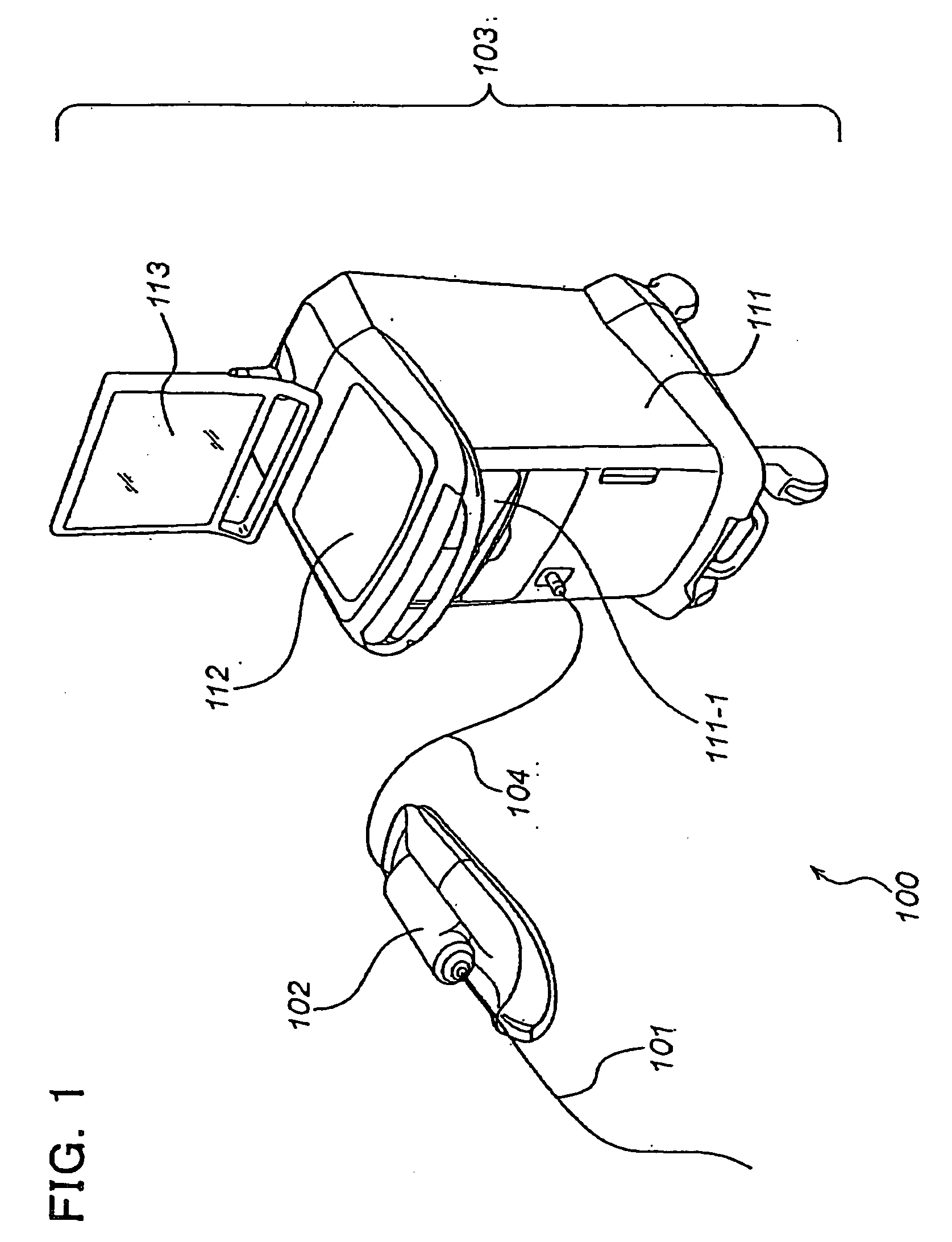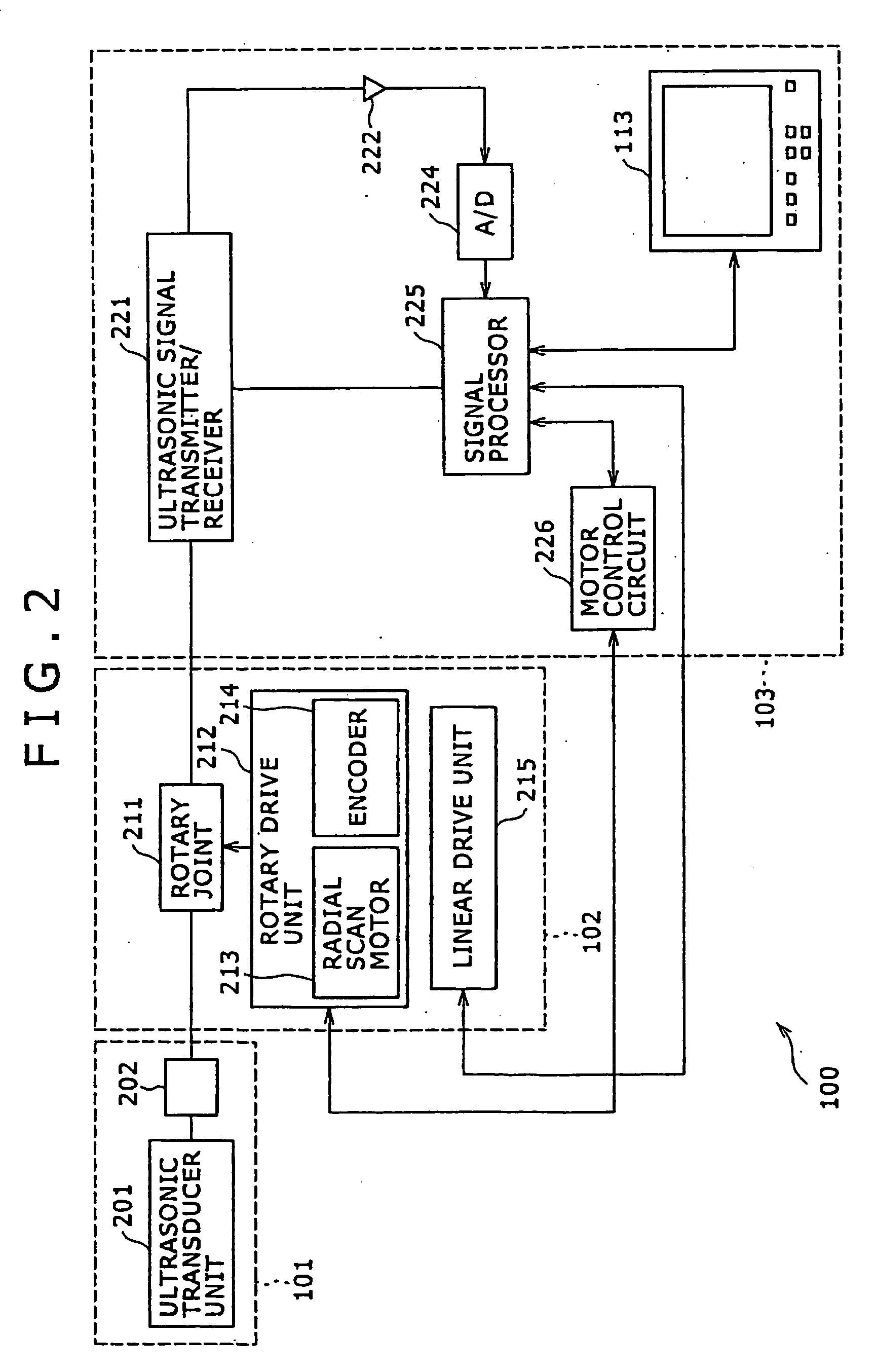Image diagnostic system and apparatus, and processing method therefor
a diagnostic system and image technology, applied in tomography, applications, catheters, etc., can solve the problems of difficult to achieve complete synchronization between the rotational speed of the radial scan motor and the rotational speed of the motor, and achieve good quality
- Summary
- Abstract
- Description
- Claims
- Application Information
AI Technical Summary
Benefits of technology
Problems solved by technology
Method used
Image
Examples
first embodiment
1. General Overall Construction of IVUS Imaging System
[0035]Referring to FIG. 1, an intravascular ultrasound (IVUS) imaging system (i.e., image diagnostic system) 100 according to one illustrated and disclosed embodiment includes a catheter section (i.e., probe) 101, a scanner & pull-back unit 102 and an operation control system 103. The scanner & pull-back unit 102 and the operation control system 103 are connected together via a signal line 104 and compose an image diagnostic apparatus.
[0036]The catheter section101 is adapted to be inserted directly into a blood vessel to measure internal conditions of the blood vessel by way of an ultrasonic transducer 401b which is shown in FIG. 4. The scanner & pull-back unit 102 controls movements of the ultrasonic transducer 401b within the catheter section 101.
[0037]The operation control system 103 operates to input various preset values upon performing an intravascular ultrasound diagnosis and to also process data acquired by a measurement ...
second embodiment
[0089]The description above describes about the processing at the A / D converter and the signal processor in an IVUS imaging system when the rotation cycle for radial scanning by the ultrasonic transducer and the transmission / reception cycle of ultrasonic signals at the probe are out of synchronization. However, the disclosure here is not specifically limited to IVUS imaging systems, but rather has useful application to other image diagnostic systems. The following describes application of the disclosure here to an optical coherence tomography (OCT) imaging system.
1. Measurement Principle of OCT Imaging System
[0090]The measurement principle of the OCT imaging system will first be briefly described. Because light is electromagnetic radiation, it generally has the property that beams of light interfere with each other when they are superimposed. The interference property that defines whether light interferes readily or hardly is called “coherence”, and in general OCT imaging systems, l...
third embodiment
[0140]The above-described second embodiment describes application of the disclosed subject matter to the OCT imaging system. However, the present invention is not limited specifically to OCT imaging systems as it can also be applied to OCT imaging systems making use of a wavelength swept light source. A description will hereinafter be made about applying the disclosure here to an OCT imaging system making use of a wavelength swept light source.
1. Measurement Principle of OCT Imaging System Making Use of a Wavelength Swept Light Source
[0141]Initially, a brief description is set forth of the measurement principle of the OCT imaging system making use of a wavelength swept light source. The OCT imaging system making use of a wavelength swept light source and the OCT imaging system described above as the second embodiment are basically the same in measurement principle as shown inFIGS. 10 and 11 in that they make use of optical interference. Accordingly, the description which follows pri...
PUM
 Login to View More
Login to View More Abstract
Description
Claims
Application Information
 Login to View More
Login to View More - R&D
- Intellectual Property
- Life Sciences
- Materials
- Tech Scout
- Unparalleled Data Quality
- Higher Quality Content
- 60% Fewer Hallucinations
Browse by: Latest US Patents, China's latest patents, Technical Efficacy Thesaurus, Application Domain, Technology Topic, Popular Technical Reports.
© 2025 PatSnap. All rights reserved.Legal|Privacy policy|Modern Slavery Act Transparency Statement|Sitemap|About US| Contact US: help@patsnap.com



